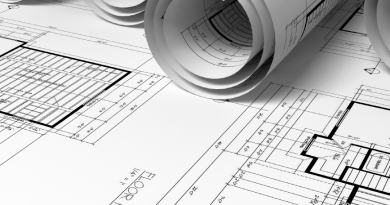Are Your Students Hearing You? The Importance of Acoustic Treatment in K-12 Schools
By James Wright
“We would never teach reading in a classroom without lights. Why then do then do we teach in ‘acoustical darkness’? Speaking to a class, especially of younger students, is akin to turning out the light.” – John Erdreich PhD
Several generations of students and teachers have battled the inherent problems caused by noise and poor acoustic design in educational settings. Despite the problem having been recognized for over 100 years, acoustics in classrooms remain under-addressed in older buildings and many newer built schools. A 2012 released study “Essex Study-Optimal classroom acoustics for all” defines the need and benefits of acoustically treating classrooms. The study looked at the impact of reducing reverberation time in a working classroom environment. The conclusion drawn after several measurements of acoustics and surveys with participants was a demonstrable clear benefit to all by improving the acoustic environment. Simply, uncontrolled reverberations in a classroom have a direct negative effect on health and performance, for both students and teachers.
Reverberation is the echo of sound reflecting from hard surface to hard surface causing noise to build up and creating a confusing, unintelligible mass of sound. The hard surfaces such as windows, blackboards, concrete blocks and gypsum walls found in most classrooms do not absorb sound energy and as a result, the sound reflects back into the room, arriving at the ear many times at intervals that are milliseconds apart. This creates a sound that is smeared and the brain has difficulty distinguishing the primary information and disseminating it from the reverberation. This problem is exacerbated when hearing assist devices and cochlear implants are used. Excess reverberation also affects students with auditory processing issues, ADHD, and other learning challenges. In fact, all students benefit from lowering the reverberation and improving intelligibility.
Reverberation is measured in relation to time. The measurement (RT60) is the time it takes for sound to decay by 60dB in a particular space. The greater the reverberation time, the more “echo” in a room, and the greater the listening challenges become. The reverberation time of a room will depend on variables such as the size of the classroom, the reflective surfaces and how other absorbent or reflective features in the room may increase the effect.

Consider the following: A typical classroom measures 960 square feet with a ceiling height of 12 feet. This adds up to a wall surface area of 1488 square feet. The ANSI (American National Standards Institute) suggests an acceptable reverberation time for instruction in a classroom be less than 0.7 seconds when unoccupied. If left untreated, a classroom of this size can have a predicted reverberation time of approximately 1.9 seconds or just about three times greater than the suggested maximum.
The Effect on Students and Teachers
Most learning occurs from the verbal communication of information and ideas. Traditionally, classrooms have not been designed with attention to how the room sounds or how it may affect the students and teachers that are using it. It is well known that proximity to the teacher increases student engagement and the comprehension of the material being taught. As most classes have 30 or more students in it, it is impossible for every student to be close to the teacher.

Rows of desks can put students up to 27’ away from the teacher or the instructive source. For students at the rear of the class, the volume level reaching the students will be reduced by as much as 20dB compared to when it is created. And due to the time it takes for sound to travel, it will be delayed by 25 milliseconds, causing a slight disconnect between the visual stimuli created by teacher’s mouth movement and the late arrival of the information. The brain then has to differentiate whether the sound being received is the source material or the sound bouncing off the walls. When one factors in the natural reverberation in the room, the delay in sound reaching the ear, along with distractions such as HVAC noise, the classroom base-level sound and noise seeping in from outside the doors and windows, it is not surprising to find that many children are simply not hearing the material they are being taught.
And this is only the beginning. As the ambient sound level in the classroom increases, the teacher naturally increases his or her voice level. The ‘classroom chatter’ naturally increases to compensate and the problem exacerbates to the point where the teacher and students begin to lose concentration. To fully understand the severity of the problem, think of last time you went to a noisy restaurant. In some cases, the sound pressure inside the room is so loud that you cannot even have a conversation with the person across the table. The acoustic energy has increased beyond the room’s ability to dissipate it. We manage to communicate by reading lips and filling in the blanks.
Children do not Listen Like Adults
When you consider the acoustic problems described, studies suggest that as many as 30% of students may be challenged in understanding their teacher’s message. Poor intelligibility due to proximity to the teacher, excessive reverberation and noise result in a lack of comprehension of the material being taught.
Most adults would not notice these challenges as life experience allows us to “fill in the missing words”. Consider the following example:
Arocdnicg to rsceearch at Cmabrigde Uinervtisy, it deosn’t mttaer in waht oredr the ltteers in a wrod are, the olny iprmoatnt tihng is taht the frist and lsat ltteer are in the rghit pcale. The rset can be a toatl mses and you can sitll raed it wouthit poberlrm. Tihs is buseace the huamn mnid deos not raed ervey lteter by istlef, but the wrod as a wlohe.
Many students miss up to 1 in 4 words being spoken by their instructor due to sub-standard room acoustics or poor intelligibility. Acoustic smearing from poor sounding classrooms is akin to the changing the order of letters and expecting children to understand the message. Children, however, are not as mature, are not skillful readers, and are not as capable at listening as adults. To ensure the message being transmitted is being received, they require optimal conditions for hearing and comprehension.
The solution is to acoustically treat the classroom
Right from the early days of radio, broadcasters concluded that unless the source broadcast was clear and concise, the message would get lost. To address the problem, absorptive acoustic panels were mounted on the broadcast studio wall surfaces to suppress the reflections and improve intelligibility for the listener. This practice continues to this day and the same rules apply whether you are teaching in a classroom, delivering a message in a house of worship or broadcasting a distance learning class over the internet.
How sound absorption works
Sound, in the form of acoustic energy penetrates the porous acoustic panel where it causes minute internal fibers to vibrate. This causes a thermo-dynamic energy transfer – which converts acoustic energy into heat. High density panels made from 6lb glass wool are particularly effective as they are designed to absorb energy in the critical voice spectrum. Instead of sound reflecting off the wall surfaces, it is absorbed. This lowers the ambient noise in the classroom and significantly reduces the reverberant field, vastly improving intelligibility.
Estimating the amount of acoustic treatment required to fix the problem
To determine how much acoustic treatment is required to fix a room’s acoustics you must first determine the RT (reverberation time) in your classroom, simply clap your hands and listen to the decay while counting. If the decay lasts more than 1 or 2 seconds, adding acoustic panels to the wall surfaces will be very beneficial. For classrooms, covering between 17% ~ 25% of the wall surface with 6lb glass wool acoustic panels will produce a very noticeable improvement in the acoustical behavior of the room.
The following table (Image 3 – next page) describes the average reverberation time of a classroom measuring 960 ft2 with a ceiling height of 12 ft. The predicted reverberation time for this room is 1.9 Sec with no acoustic treatment.
The wall surface area for this room (1488 ft2) is determined by multiplying the wall width or length by the height. Reducing the reverberation time to 0.7 seconds vastly improves intelligibility, which in turn enables the teacher to communicate source material effectively in an even volume, as well as helping to keep the ambient noise level of the room significantly quieter. Applying acoustic panels to 17% ~ 20% of the available wall surface area will deliver effective results.
When wall surfaces are taken up by windows and blackboards, mounting or hanging panels from the ceiling is recommended. A popular solution is to suspend the panels from the ceiling. The added benefit of the airspace created behind the panel when suspended increases the panel’s absorptive surface area. This is particularly effective in noisy cafeterias. For classrooms with T-bar ceilings, there are acoustic tiles that can replace the original non-absorptive compressed fiber tile. Actual panel placement is not as critical as one may think. It is more about using available space to your best advantage by evenly distributing the panels around the room.

A classroom free from excessive reverberation and noise is far more conducive to learning and greatly contributes to better student success – whether the student has learning issues or not. Reducing the ambient sound level also makes it easier to teach, reduces teacher stress and burn-out, and significantly reduces listening fatigue for everyone. When you consider the teacher – student benefits and the relatively low cost involved to install acoustic treatment, a practical solution for school districts and post secondary institutions that care about attaining the maximum results from their student body is readily available.

—————————
About James Wright
James Wright is a business development executive at Primacoustic.
About Acoustic Panels
There are many types of acoustic panels made today. The most common is a fabric wrapped glass wool panel that can be sourced in various densities, but acoustic testing has proven that higher density 6lb panels provide even absorption across the audio spectrum to deliver a more natural sounding room. For public spaces such as classrooms, libraries, cafeterias and gymnasiums, special attention regarding safety must be paid to flame spread and smoke density. Look for panels that are safe for use in commercial applications. They will have been tested by an independent lab to ensure they pass ASTM-E83 (United States), Can/UL S108 (Canada) or EIN-36535 (Europe). It is best to avoid panels made from plastics such as urethane.
The thickness and density of the acoustic panel plays a role in the performance. As rule of thumb, the thicker the panel, the lower the frequency it will absorb. For instance, while a classroom may be treated with a combination of 1” and 2” thick 6lb fibreglass panels — capable of absorbing sound in the voice range — a multifunction assembly hall may benefit from thicker panels to absorb more energy in the lower registers. This would better manage bass during musical performances.



